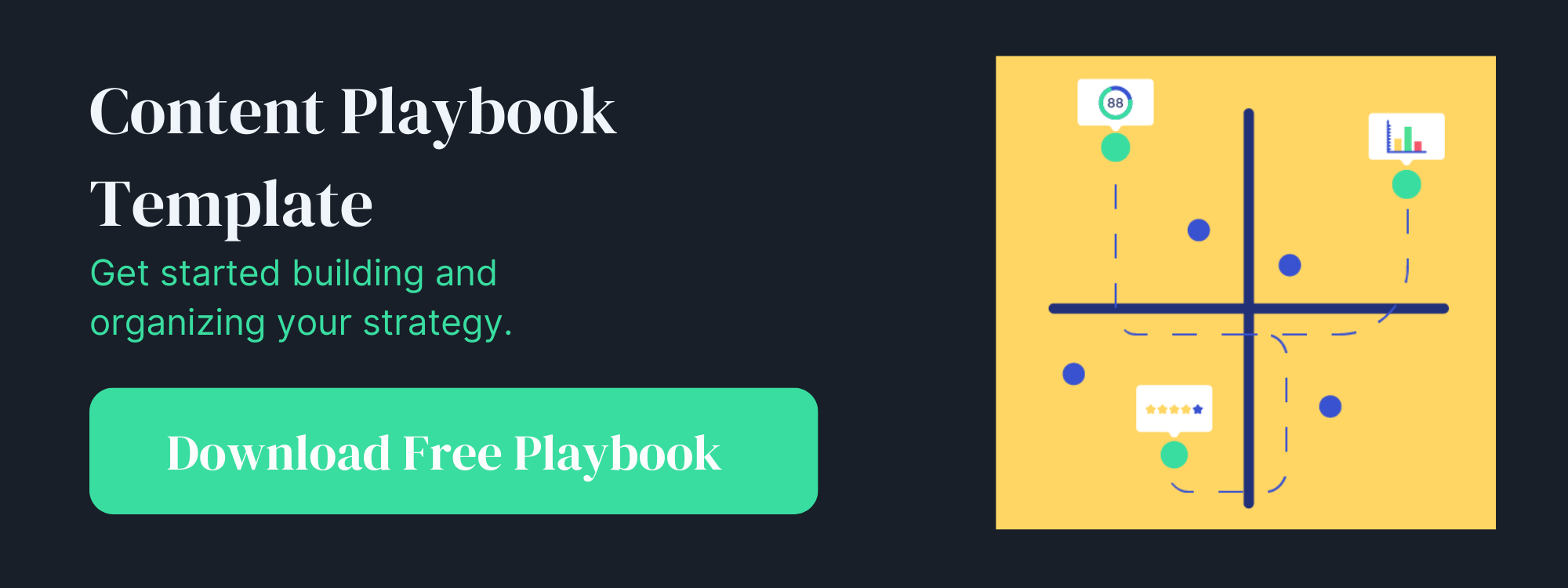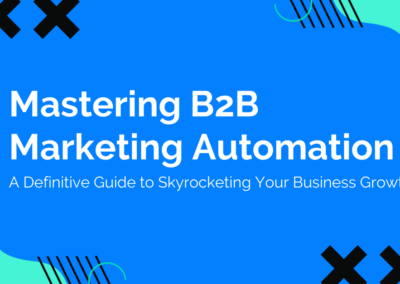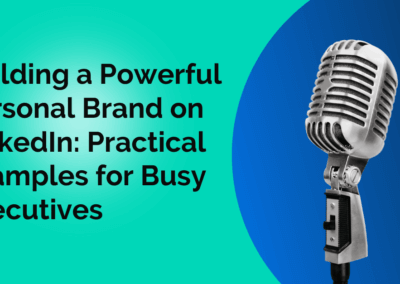Feeling bamboozled by marketing tactics, channels, and buzzwords? There’s a lot to navigate when searching for the best marketing practices for your emerging company. Knowing when and how to get a realistic and effective marketing strategy off the ground may even seem daunting.
In this B2B marketing strategy framework, we provide insights on how to develop a manageable strategy for an early market team. First, we’ll cover the four marketing fundamentals essential for every business to define. Then we discuss the ongoing strategies successful companies use to scale long-term growth.
Let’s get started.
Start-Up Marketing Fundamentals
Before you can develop any tactical strategies or marketing messaging, you first need a clear picture of who you are serving and how you provide value to them. Ideal client profiles and buyer personas are essential building blocks that ensure everything else you build remains relevant to consumer needs.
Define Buyer Personas & Ideal Client Profiles
An ideal client profile (ICP) describes characteristics of a business that make it an optimal fit for your products and services.
Buyer personas are semi-fictional descriptions of the individuals who work at the ICP/businesses that would benefit from your solutions.
Having ICPs clearly defined helps your sales and marketing teams to understand which businesses would make great prospects. Your buyer personas will assist in creating effective messaging that aligns with real customer needs and desires.
Aim to create 2-3 personas and 1-2 client profiles. Your ICPs and buyer personas can be developed based on what you know about past or current clients.
While larger companies may conduct customer interviews to guide the creation of buyer personas, it won’t be as realistic for smaller businesses with less time, fewer resources, and fewer customers. Further, the information obtained from an interview typically reflects just one individual’s problems while an effective buyer persona should be representative of the broader problems your solutions solve.
If you need more insights, look to 3rd party resources such as LinkedIn or online job boards where you can pull information from job listings matching your customer profiles. You can also use professional information sources or industry associations for more information.
What to include in your Ideal Client Profiles:
- Demographics including industry, job titles, levels of seniority, location, and company size
- Purchasing processes
- Common challenges
- Possible objections
What to include in your buyer personas:
- Basic demographics – industry, job title, seniority
- Job responsibilities
- Frustrations
- Wish lists
- Goals
- KPIs (such as how job performance is measured)
Once you document your client profiles and personas, your contact database should be segmented in order to send relevant, targeted messages that resonate with your target buyer personas.
Check out → How to Build a Quality B2B Buyer Persona in Five Easy Steps for more tips on building your buyer personas.
With a deep understanding of your ideal clients, you’re ready to learn how the buyer’s journey further assists your sales and marketing messaging.
Understand the Buyer’s Journey for Aligned Messaging
Mapping out your buyer’s journey will provide you with valuable insights into the decision-making process your buyer personas go through before converting.
By understanding the pains and problems experienced along the buyer’s journey, sales reps and marketing specialists can better empathize with prospects when describing your solutions.
Inbound marketing methodology focuses on providing timely educational materials aligned with the buyer’s journey that draw leads to your site based on their specific needs.
Graphic: HubSpot
In recent years, there’s been a fundamental change surrounding who holds the power in the sales process thanks to the integration of pocket-sized technology. Buyers have access to more information than ever to compare products and services—making high-quality, relevant content that assists customers along every stage of the buyer’s journey essential for your business to succeed.
The goal of the content associated with your website, emails, and social media is to advance buyers through the sales and marketing funnel. The buyer’s journey will help you prioritize the topics covered in your content.
Read more on how to Optimize Your Sales Funnel by Aligning it with the Buyer’s Journey.
Gain Insights from Competitor Analysis
Competitive analysis involves researching major competitor products, sales, and marketing tactics. Often the first objective is to understand their marketing strategies. The second is to see how they position themselves in the market and how you want to position your company in response.
Your competitive analysis ultimately is the research that fuels how your marketing strategy will develop. A well-performed competitive analysis will support data-driven business and marketing strategies, paving the way for you to excel in capturing market share.
Start by defining what questions you have or insights you hope to gain that will assist you in your business and marketing goals. Then gather the information to answer those questions from your competitors’ websites, blogs, social media, and through analytical tools. Reviews can also reveal immeasurable value regarding the positive experiences and pain points consumers have using your competitors’ products and services. Throughout your competitor analysis, consider how you will position your brand in the market landscape.
Set SMART Goals and Choose your Key Performance Indicators (KPIs)
Using the SMART goal framework ensures your marketing objectives align with your business goals. SMART is an acronym used to create goals that include Specific, Measurable, Attainable, Relevant, and Timely elements.
In the early stages, your goal may be to increase awareness of your brand. As time progresses, your goal should shift to increased leads and ultimately revenue. Examples of KPIs that align with these goals are shown in the table below:
| Goal -> | KPIs |
| Increase brand awareness | Website visits |
| Increase leads | Conversion rates |
| Increase revenue | Sales |
It’s important to have an understanding of how many deals or opportunities are needed in your pipeline to close a new customer. Set your marketing goals using the closest key metric that leads to new opportunities–typically new sales leads.
This is the best place to start as you build your marketing program. In later stages of your company’s development, you may advance to more complex goal setting using revenue attribution reporting. Set your goals further up the funnel until you get to website traffic.
A typical funnel looks like this:
Visitor → Lead → Marketing Qualified Lead → Sales Qualified Lead → Opportunity → Customer
You will need to determine how many marketing-qualified leads you need to generate in order to convert the number of sales leads from your goal. This conversion formula can be modeled up to the top of the funnel at “visitors”.
Let’s recap.
Foundational Steps Checklist:
- Document 2-3 buyer personas and 1-2 ICPs
- Map out your buyer’s journey
- Complete a competitive analysis
- Set SMART goals and identify the appropriate KPIs
These steps will assist you across all decision-making moments in your business.
With those boxes checked, it’s time to talk strategy.
Create Your Content Strategy
“Content” refers to the digital marketing assets associated with your company that demonstrate your expertise within your field and help communicate your unique solutions to potential customers. This may include blog articles, videos, ebooks, case studies, white papers, or reports to name a few.
An effective content strategy aims to assist potential customers by providing educational information that helps solve problems. Creating content that is integrated with search engine optimization (SEO) best practices will assist your website in being discovered by people actively searching online for answers or help. SEO content focuses on positioning your products and services as timely solutions to those consumer problems.
The topics you choose to cover in your content should be based on keywords that align with how your buyer personas define their problems, as well as the topics that establish you as an authority in your field.
Content Strategy Breakdown:
Categories. Identify 3 to 5 categories of information you want to be known for. Start with the broad topics where you want to be viewed as an authority and which align with your products and services. You can add more categories as your company grows.
Subtopics. Identify sub-topics related to the broad topic categories, based on what your audience is searching for.
Campaign roadmap. Create a campaign roadmap based on those topics and define how each campaign will convert across the stages of your funnel.
Distribution. Create a plan for how to distribute and promote your content, such as through email, social media, and paid advertising.
The content your team creates– whether blog articles, videos, ebooks, or case studies– will serve as more than just resources housed on your website. As you distribute the content through the various channels, these assets will serve as fuel for creating demand for your products and services. We’ll discuss demand generation in more detail below.
But first, you’ll need a go-to market strategy.
Develop Your Go-To Market (GTM) Strategy
When preparing to bring a product or service to market, your GTM business strategy should integrate your sales strategy and marketing strategy to position your product as the best solution to consumer problems. Your GTM strategy is developed based on the four foundational marketing steps we discussed at the beginning of this article.
HubSpot offers 4 questions to help you hone in on GTM:
Product-Market Fit. What problems does your product or service solve?
Target Audience. Who is experiencing the problem?
Competition and Demand. Who offers the same service? How much demand is there?
Distribution. How will you sell the product or service?
With your GTM plans in place, you’re ready to start executing your marketing campaigns.
Advance More Buyers Faster with Demand Generation
Demand generation is everything your brand does to create awareness and interest surrounding your company’s products and services. This includes all marketing efforts to help your organization reach new markets, promote new product features, build consumer buzz, generate PR, and re-engage existing customers.
The purchase decision for B2B products and services typically involves extensive online research and comparisons. Personalized online messaging for specific consumer problems is the best place to start when developing content for use in demand generation campaigns.
Below we give brief descriptions of the modern channels for distributing your message and creating demand.
Paid Media. LinkedIn ads, Facebook ads, Google display, paid search, video ads, and other promoted multimedia are effective channels for expanding brand reach, generating more website traffic, and retargeting past web visitors.
Social Media. B2B companies are embracing online brand development and with it, commanding their social media presence to engage, attract and inform their audiences. Your business can demonstrate credibility and nurture customer loyalty through educational content and resources aimed at helping your target audiences. Whether you share blog posts, case studies, e-books, or how-to videos, your social media marketing strategy will be successful if centered around actionable, helpful content.
Email Promotion. Email marketing is the process of targeting your audience and customers through email promotion. Boost conversion rates and revenue by providing subscribers and customers with valuable information to help achieve their goals. Read more here on email marketing tips.
No matter which channels you choose, the key to success in digital marketing remains the same– consistency.
Time to recap! In this b2b marketing strategy framework, we’ve covered:
- 4 early marketing fundamentals every business needs established
- Foundations to content strategy development
- Initiating a Go-To Market strategy and creating demand for your solutions
All that’s left is to ensure you can efficiently track, measure, and analyze your data.
Connect Your Tech Stack
You are likely already using a CRM and various marketing tools. Make sure they are set up correctly to track the metrics you’ve defined as your KPIs. If you’re looking for a CRM and marketing tool all-in-one, HubSpot is ideal. It offers a comprehensive integrated system for managing email, social, paid, website, and more all in the same place as your sales processes. HubSpot is also scalable. As your business grows, you can transition from the free version all the way to enterprise.
Your B2B Marketing Strategy Framework
Whew. We gave you a lot of information in this b2b marketing strategy framework. We know B2B marketing may seem complicated. But running a successful startup marketing strategy doesn’t have to be stressful. Download our content playbook to get started.





